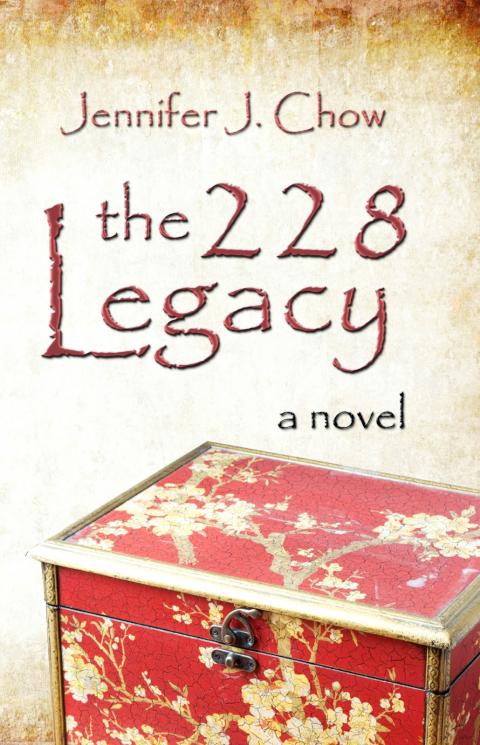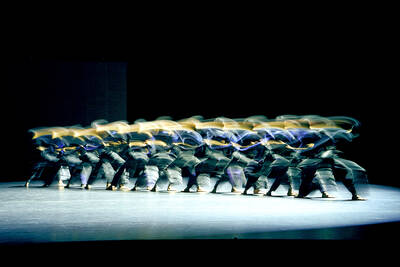Outstanding books are easy to review, as are really bad ones. Those that lie somewhere in between present a more difficult challenge.
The 228 Legacy is a first novel by Jennifer Chow, a young Chinese American. It’s set in 1980s California, in the small town of Fairview. Despite the title, no part of the book takes place in 1947, and only a few pages are set in Taiwan.
The novel’s main characters are Lisa, an administrative worker in an old-people’s home when the novel opens, her school-age daughter Abbey, and her mother Silk, who has worked in the Californian wine industry. A fourth character, Jack, of a similar age to Silk, works as a school janitor.

These four have chapters dedicated to them in an almost strict sequence. And the whole novel is narrated in the present tense.
All these characters are of Asian ethnicity. Silk was born and married in Taiwan, while her daughter and grand-daughter are both full-fledged Americans. Jack, by contrast, was born in China, and this initially causes some dissention. He tries to befriend Silk, in particular, but his overtures are haughtily rejected. The old lady is passionate about her Taiwanese identity, which is hardly surprising, because her husband, an academic chemist, was, it soon transpires, murdered by the Chinese Nationalist Party (KMT) during the uprising on Feb. 28, 1947.
To begin with, however, the characters’ problems are far removed from Taiwan’s history. Abbey feels isolated at school, despite sharing top place in all math tests with another high-aspiring student. Lisa loses her job on the first page, while midway through the novel Silk is diagnosed with inoperable cancer.
There’s in fact plenty about old age, illness and death in this novel — in part, we’re told, because of the author’s experience in geriatric social work. This nevertheless contributes to the book’s somewhat gloomy ambience. When Jack falls from a ladder and breaks his leg you can’t help thinking it’s something only to be expected in this particular novel.
The main reason I found this book rather depressing, though, wasn’t the geriatric and sickness emphasis but the story’s unrelenting small-town ambience. There’s nothing wrong with small towns as such, of course, but for me what ennobles life is the grandness of wild nature, the greatness of great books and music, and relations — passionate, intellectual or just plain comic — with other people. And no character in The 228 Legacy touches, in any significant way, any of these things. They’re all happy to remain for the most part in a world defined by receptionists’ offices, school-rooms, convenience stores and dining rooms.
The characters in Chekhov’s plays also live in relative backwaters, and for the most part, like Jennifer Chow’s characters, don’t engage in discussions of philosophical issues either. But their imaginative worlds extend far beyond those in this novel, and Chekhov’s insights into their personalities are infinitely richer than those on offer here.
This small-town mentality extends beyond Fairview, California, too. When Silk goes on a trip to Rome, one of the most culturally rich places on the planet, you’d have thought, among the few impressions she comes up with is that they make pizza better in Italy than they do in the US. It isn’t too surprising, then, that her reactions to Taiwan are similarly limited.
As the main reason any reader in Taiwan is likely to pick up this novel is the reference to the 228 Incident in the title, it’s appropriate to take a closer look at the references to Taiwan within the text.
There’s a mention of piles of severed heads on the streets in 1947, the cruelty of KMT soldiers, and the severe food shortages under the party’s early rule. When Silk, Lisa and Abbey travel to Taiwan on a three-day sightseeing tour, they visit the National Palace Museum, the Chiang Kai-shek Memorial Hall, Yangmingshan and Greater Kaohsiung, where they find a 228 memorial. Silk laments that the National Palace Museum contains Chinese treasures, not Taiwanese ones, and in Kaohsiung they gather some of the “rich chocolate earth” to take back to the US.
What are the book’s virtues, then? Clearly imagined detail, consistent characterization and avoidance of bombast must rate highly. In essence this is what some people would call a heartwarming read — taking account of suffering but coming up with a reasonably optimistic reaction to it.
At its center, however, this book appears to propose that by the uncovering of secrets rooted in the past, the present can be made more tolerant and cooperative. Silk, for example, considers her cancer the result of long-suppressed anxiety about her husband’s death. If the virtue of speaking freely about the past is this novel’s thesis, then it’s doubtful if it’s fully realized. We learn the basics of the 228 story quite early on, and its unmasking doesn’t really lead to any great improvement in the characters’ lives. Silk eventually dies, Abbey predictably gets over her school-days problems, and Lisa and Jack find their own ways forward, Jack making a memorial garden for Silk and becoming a sort of substitute father for Lisa. This is all just what you’d expect, barring catastrophes, of almost any lives.
All in all, then, this novel serves as a minor educative experience for those who’ve never heard of 228, and have only vague ideas about Taiwan. For those averagely well-informed on both topics already, however, there’s relatively little to be gained from it.

Most heroes are remembered for the battles they fought. Taiwan’s Black Bat Squadron is remembered for flying into Chinese airspace 838 times between 1953 and 1967, and for the 148 men whose sacrifice bought the intelligence that kept Taiwan secure. Two-thirds of the squadron died carrying out missions most people wouldn’t learn about for another 40 years. The squadron lost 15 aircraft and 148 crew members over those 14 years, making it the deadliest unit in Taiwan’s military history by casualty rate. They flew at night, often at low altitudes, straight into some of the most heavily defended airspace in Asia.

Beijing’s ironic, abusive tantrums aimed at Japan since Japanese Prime Minister Sanae Takaichi publicly stated that a Taiwan contingency would be an existential crisis for Japan, have revealed for all the world to see that the People’s Republic of China (PRC) lusts after Okinawa. We all owe Takaichi a debt of thanks for getting the PRC to make that public. The PRC and its netizens, taking their cue from the Chinese Communist Party (CCP), are presenting Okinawa by mirroring the claims about Taiwan. Official PRC propaganda organs began to wax lyrical about Okinawa’s “unsettled status” beginning last month. A Global

Taiwan’s democracy is at risk. Be very alarmed. This is not a drill. The current constitutional crisis progressed slowly, then suddenly. Political tensions, partisan hostility and emotions are all running high right when cool heads and calm negotiation are most needed. Oxford defines brinkmanship as: “The art or practice of pursuing a dangerous policy to the limits of safety before stopping, especially in politics.” It says the term comes from a quote from a 1956 Cold War interview with then-American Secretary of State John Foster Dulles, when he said: ‘The ability to get to the verge without getting into the war is

Like much in the world today, theater has experienced major disruptions over the six years since COVID-19. The pandemic, the war in Ukraine and social media have created a new normal of geopolitical and information uncertainty, and the performing arts are not immune to these effects. “Ten years ago people wanted to come to the theater to engage with important issues, but now the Internet allows them to engage with those issues powerfully and immediately,” said Faith Tan, programming director of the Esplanade in Singapore, speaking last week in Japan. “One reaction to unpredictability has been a renewed emphasis on